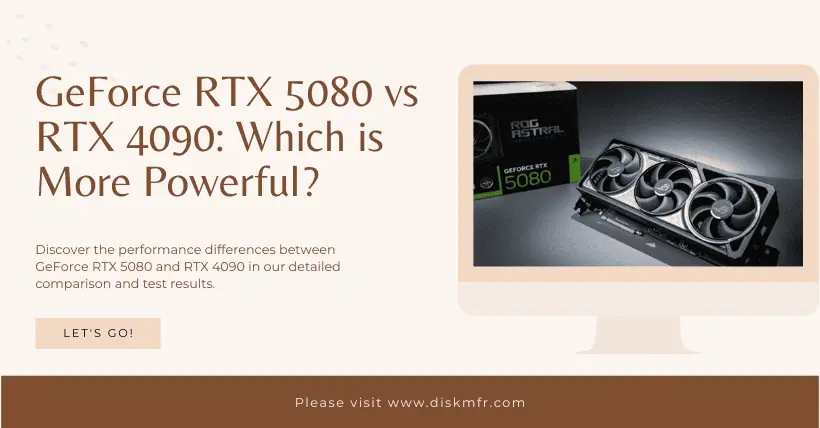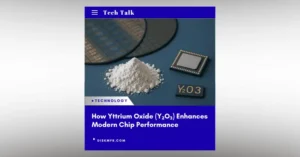I. Introduction
Recently, the RTX 5080 has finally been officially released. There have been two main rumors circulating about its actual performance. One claims that its performance is explosive, while the other suggests that the performance improvement is not significant.
Today, the test has finally arrived. The focus of the test is on a topic that many people are most concerned with: Can the GeForce RTX 5080 beat the previous generation flagship, the GeForce RTX 4090? This article will reveal the answer.
II. Parameter Comparison
The GeForce RTX 5080 was released on January 6, 2025, featuring the GB203-400-A1 GPU chip, based on the Blackwell 2.0 architecture, with TSMC’s 5nm process. It has 10,752 CUDA cores, 84 ray-tracing units, 128 raster units, 336 texture units, 336 tensor cores, 76 multi-unit stream processors, and an L2 cache of 64MB.
The standard operating frequency is 2295MHz, with a maximum frequency of 2617MHz. It comes with 16GB of GDDR7 memory, a 256-bit memory bus, a memory speed of 30Gbps, a memory bandwidth of 960GB/s, and FP32 floating-point performance of 56.28 TFLOPS. Its power consumption is 360W, and the reference price is $999.
The GeForce RTX 4090 features the AD-102 GPU, using TSMC’s 4nm process. It has 16,384 CUDA cores, 176 raster units, 512 texture units, 128 multi-unit stream processors, 72MB of L2 cache, 512 tensor cores, and 128 ray-tracing cores.
The standard operating frequency is 2235MHz, with a maximum frequency of 2520MHz. It comes with 24GB of GDDR6X memory, a 384-bit memory bus, a memory speed of 21Gbps, a memory bandwidth of 1008GB/s, and FP32 floating-point performance of 82.58 TFLOPS. Its power consumption is 450W.
III. Test Platform Configuration
The main configuration is as follows:
- Processor: Ryzen 7 9800X3D
- Motherboard: MSI MPG X670E CARBON
- Memory: G.Skill
- Graphics Cards: GeForce RTX 5080 16GB and GeForce RTX 4090 24GB
- Storage: Two Samsung 970 EVO 1TB drives
- Operating System: Windows 11
IV. Game Testing between GeForce RTX 5080 and RTX 4090
The following seven games will be tested, all at 4K resolution. In the images below, the left side represents the GeForce RTX 4090 platform, and the right side represents the GeForce RTX 5080 platform.
The first game is “God of War.”
The GeForce RTX 4090 platform’s average frame rate is 118 FPS, with a minimum instantaneous frame rate of 102 FPS, frame time of 8.0ms, CPU usage of 23%, power consumption of 54W, temperature of 52°C, memory usage of 13.3GB, GPU usage of 99%, VRAM usage of 9.1GB, power consumption of 399W, and temperature of 55°C.
The GeForce RTX 5080 platform’s average frame rate is 104 FPS, with a minimum instantaneous frame rate of 94 FPS, frame time of 9.4ms, CPU usage of 28%, power consumption of 63W, temperature of 52°C, memory usage of 12.0GB, GPU usage of 99%, VRAM usage of 8.9GB, power consumption of 286W, and temperature of 54°C.
In this game, the GeForce RTX 5080 platform has a 5% higher CPU usage, 1.3GB lower memory usage, both GPUs are fully loaded, and VRAM usage is 0.2GB lower.
In terms of average frame rate, the GeForce RTX 5080 platform is 14 FPS lower than the GeForce RTX 4090 platform, with a 18 FPS lower minimum instantaneous frame rate, frame time being 1ms higher, power consumption 113W lower, and temperatures being almost the same.
The second game is “Ghostwire: Tokyo.”
The GeForce RTX 4090 platform’s average frame rate is 88 FPS, with a minimum instantaneous frame rate of 74 FPS, frame time of 11.5ms, CPU usage of 12%, power consumption of 47W, temperature of 46°C, memory usage of 10.6GB, GPU usage of 99%, VRAM usage of 8.7GB, power consumption of 364W, and temperature of 54°C.
The GeForce RTX 5080 platform’s average frame rate is 76 FPS, with a minimum instantaneous frame rate of 66 FPS, frame time of 13.4ms, CPU usage of 12%, power consumption of 43W, temperature of 41°C, memory usage of 10.5GB, GPU usage of 99%, VRAM usage of 8.6GB, power consumption of 285W, and temperature of 53°C.
In this game, both platforms have nearly identical CPU usage, memory usage, GPU usage, and VRAM usage with very minor differences.
In terms of average frame rate, the GeForce RTX 5080 platform is 12 FPS lower than the GeForce RTX 4090 platform, with a 8 FPS lower minimum instantaneous frame rate, frame time being 2ms higher, power consumption 79W lower, and temperatures being almost the same.
The third game is “Silent Hill 2.”
The GeForce RTX 4090 platform’s average frame rate is 60 FPS, with a minimum instantaneous frame rate of 52 FPS, frame time of 17.1ms, CPU usage of 13%, power consumption of 51W, temperature of 47°C, memory usage of 10.6GB, GPU usage of 98%, VRAM usage of 8.8GB, power consumption of 355W, and temperature of 52°C.
The GeForce RTX 5080 platform’s average frame rate is 53 FPS, with a minimum instantaneous frame rate of 51 FPS, frame time of 18.1ms, CPU usage of 13%, power consumption of 50W, temperature of 48°C, memory usage of 12.2GB, GPU usage of 98%, VRAM usage of 9.0GB, power consumption of 269W, and temperature of 53°C.
In this game, both platforms have equal CPU usage, with the GeForce RTX 5080 platform having 1.6GB more memory usage, identical GPU usage, and 0.2GB more VRAM usage.
In terms of average frame rate, the GeForce RTX 5080 platform is 7 FPS lower than the GeForce RTX 4090 platform, with the minimum instantaneous frame rate being nearly identical, frame time being 1ms higher, power consumption 86W lower, and temperatures being almost the same.
The fourth game is “Star Wars: Jedi Survivor.”
The GeForce RTX 4090 platform’s average frame rate is 68 FPS, with a minimum instantaneous frame rate of 54 FPS, frame time of 15.1ms, CPU usage of 55%, power consumption of 65W, temperature of 60°C, memory usage of 15.7GB, GPU usage of 94%, VRAM usage of 11.6GB, power consumption of 411W, and temperature of 54°C.
The GeForce RTX 5080 platform’s average frame rate is 52 FPS, with a minimum instantaneous frame rate of 43 FPS, frame time of 19.8ms, CPU usage of 50%, power consumption of 74W, temperature of 61°C, memory usage of 15.3GB, GPU usage of 98%, VRAM usage of 11.9GB, power consumption of 287W, and temperature of 53°C.
In this game, the GeForce RTX 5080 platform has 5% lower CPU usage, 0.4GB lower memory usage, 4% higher GPU usage, and 0.3GB more VRAM usage.
In terms of average frame rate, the GeForce RTX 5080 platform is 16 FPS lower than the GeForce RTX 4090 platform, with the minimum instantaneous frame rate being 11 FPS lower, frame time being 4ms higher, power consumption 124W lower, and temperatures being nearly the same.
The fifth game is “Black Myth: Wukong.”
The GeForce RTX 4090 platform’s average frame rate is 67 FPS, with a minimum instantaneous frame rate of 53 FPS, frame time of 14.8ms, CPU usage of 14%, power consumption of 44W, temperature of 46°C, memory usage of 11.9GB, GPU usage of 99%, VRAM usage of 11.2GB, power consumption of 384W, and temperature of 53°C.
The GeForce RTX 5080 platform’s average frame rate is 58 FPS, with a minimum instantaneous frame rate of 48 FPS, frame time of 17.4ms, CPU usage of 15%, power consumption of 45W, temperature of 49°C, memory usage of 12.2GB, GPU usage of 99%, VRAM usage of 10.8GB, power consumption of 271W, and temperature of 52°C.
In this game, the GeForce RTX 5080 platform has 1% higher CPU usage, with nearly identical memory usage, GPU usage, and VRAM usage being 0.4GB lower.
In terms of average frame rate, the GeForce RTX 5080 platform is 9 FPS lower than the GeForce RTX 4090 platform, with a 5 FPS lower minimum instantaneous frame rate, frame time being 2ms higher, the overall gap being small, power consumption 113W lower, and temperatures being almost identical.
The sixth game is “Microsoft Flight Simulator.”
The GeForce RTX 4090 platform’s average frame rate is 58 FPS, with a minimum instantaneous frame rate of 53 FPS, frame time of 17.7ms, CPU usage of 28%, power consumption of 66W, temperature of 53°C, memory usage of 22.4GB, GPU usage of 98%, VRAM usage of 11.1GB, power consumption of 360W, and temperature of 54°C.
The GeForce RTX 5080 platform’s average frame rate is 52 FPS, with a minimum instantaneous frame rate of 49 FPS, frame time of 18.5ms, CPU usage of 28%, power consumption of 63W, temperature of 51°C, memory usage of 21.1GB, GPU usage of 99%, VRAM usage of 13.5GB, power consumption of 271W, and temperature of 54°C.
In this game, both platforms have equal CPU usage, with the GeForce RTX 5080 platform having 1.3GB less memory usage, identical GPU usage, and 2.4GB more VRAM usage.
In terms of average frame rate, the GeForce RTX 5080 platform is 6 FPS lower than the GeForce RTX 4090 platform, with the minimum instantaneous frame rate being 4 FPS lower, frame time being nearly identical, power consumption 89W lower, and temperatures being the same.
The seventh game is “Stalker 2.”
The GeForce RTX 4090 platform’s average frame rate is 64 FPS, with a minimum instantaneous frame rate of 51 FPS, frame time of 14.5ms, CPU usage of 28%, power consumption of 71W, temperature of 54°C, memory usage of 16.5GB, GPU usage of 98%, VRAM usage of 10.0GB, power consumption of 350W, and temperature of 52°C.
The GeForce RTX 5080 platform’s average frame rate is 58 FPS, with a minimum instantaneous frame rate of 50 FPS, frame time of 17.4ms, CPU usage of 24%, power consumption of 67W, temperature of 56°C, memory usage of 16.4GB, GPU usage of 98%, VRAM usage of 9.9GB, power consumption of 254W, and temperature of 51°C.
In this game, the GeForce RTX 5080 platform has 4% lower CPU usage, nearly identical memory usage, GPU usage, and VRAM usage.
In terms of average frame rate, the GeForce RTX 5080 platform is 6 FPS lower than the GeForce RTX 4090 platform, with the minimum instantaneous frame rate being nearly identical, frame time being 3ms higher, power consumption 96W lower, and temperatures being nearly identical.
V. Comparison Conclusion
Overall, although the GeForce RTX 4090 is an older generation product, its key performance metrics (such as CUDA core count, memory bandwidth, and VRAM capacity) are still significantly higher than those of the GeForce RTX 5080. As a result, the absolute gaming performance of the RTX 4090 remains slightly superior, and the GeForce RTX 5080 does not outperform the RTX 4090.
However, the GeForce RTX 5080 benefits from advantages in architecture, process technology, and GDDR7 memory. These factors help close the performance gap considerably, with the difference not being very large. Additionally, the power consumption advantage of the RTX 5080 is quite noticeable.
Therefore, the final conclusion of this article is that the GeForce RTX 5080’s performance does not surpass and “loses slightly” to the GeForce RTX 4090. Yet, the performance difference is small, and it can be considered a “mini GeForce RTX 4090,” making it a very worthwhile purchase—provided it can be acquired at the original price.
Related:
- RX 9060 XT vs RTX 5060: 2K Gaming Performance Test
- RTX 4070 Ti SUPER vs 5080: 4K Showdown Begins
- GeForce RTX 5070 vs 4070: Performance Test Revealed
- GeForce RTX 5070 vs 4090: Performance Showdown!
- GeForce RTX 5080 vs 5090: Performance Comparison Test
- GeForce RTX 5080 vs RTX 3090: Performance Showdown
- GeForce RTX 5080 vs RTX 3080: Performance Comparison

Disclaimer:
- This channel does not make any representations or warranties regarding the availability, accuracy, timeliness, effectiveness, or completeness of any information posted. It hereby disclaims any liability or consequences arising from the use of the information.
- This channel is non-commercial and non-profit. The re-posted content does not signify endorsement of its views or responsibility for its authenticity. It does not intend to constitute any other guidance. This channel is not liable for any inaccuracies or errors in the re-posted or published information, directly or indirectly.
- Some data, materials, text, images, etc., used in this channel are sourced from the internet, and all reposts are duly credited to their sources. If you discover any work that infringes on your intellectual property rights or personal legal interests, please contact us, and we will promptly modify or remove it.








